Michele e Giordano Radaelli
 A chemical engineer who graduated in Vienna, Michele Redaelli (Lecco, 1985) perfected his studies also graduating in Business & Administration at the Cass Business School in London. Although his studies and professional activity, carried out in Maribor in Slovenia are purely technical and economic, he approached the world of art from an early age thanks to the passion of his father. This led to the idea of developing a new artistic language that celebrates one of the most significant technologies in the history of mankind: the computer.
A chemical engineer who graduated in Vienna, Michele Redaelli (Lecco, 1985) perfected his studies also graduating in Business & Administration at the Cass Business School in London. Although his studies and professional activity, carried out in Maribor in Slovenia are purely technical and economic, he approached the world of art from an early age thanks to the passion of his father. This led to the idea of developing a new artistic language that celebrates one of the most significant technologies in the history of mankind: the computer.
Giordano Redaelli (Bosisio Parini, Lecco, 1956) trained in Milan at the Scuola Grafica Salesiana and the Scuola Superiore dArte del Castello Sforzesco, where he graduated in advertising graphics and visual arts. He worked as a graphic designer and later as Art Director of the weekly magazine TV Sorrisi e Canzoni. In Milan he founded the graphic design studio Giordano Redaelli and at Giussano the communication company Methodus. Since 1998 his experience gained in the graphics and packaging sector has lain the foundation for an unprecedented exploration of contemporary art through the use of the packaging of various consumer products. Since 2009 he has exhibited in major cities in Italy and abroad. email: [email protected]
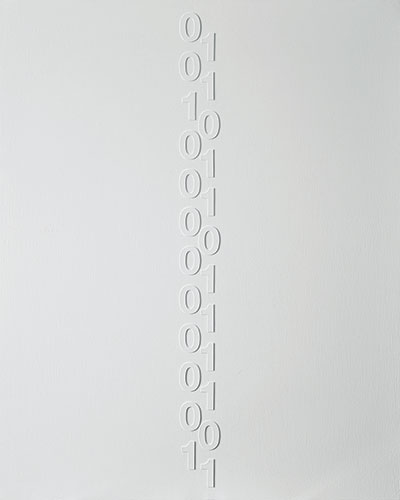
Superficie bianca, 2017 - Acrilico su tela, cm 100x80
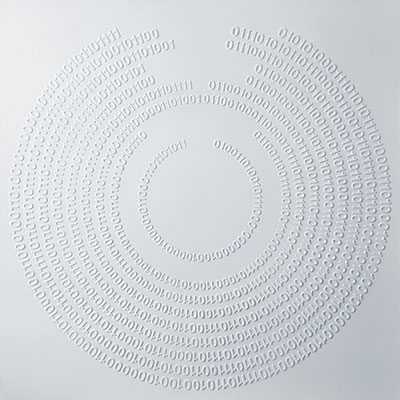
Superficie bianca, 2018 - Idropittura su tela, cm 100x100
A word from the critic
B-CODE: the binary code
(Francesca Bianucci and Chiara Cinelli)
The works resulting from Giordano and Michele Redaelli’s research bear witness, once again, to how art is the protagonist and interpreter of its own times, and how it reflects the great cultural changes that are taking place throughout history.
The invention of the binary numbering system is to be considered among the most important revolutions of the contemporary era; its use has radically changed the world in which we live. Consisting of only two symbols - 0 and 1 - the binary code represents the mathematical alphabet at the base of modern computers and, more generally, of digital information.
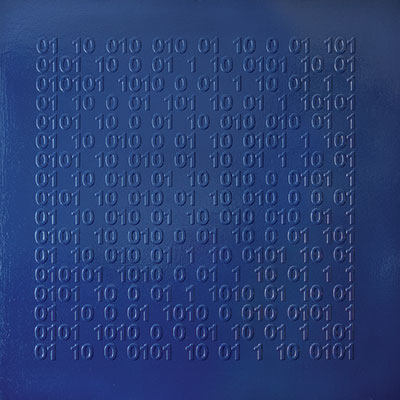
Superficie blu, 2017 - Smalto su tela, cm 80x80
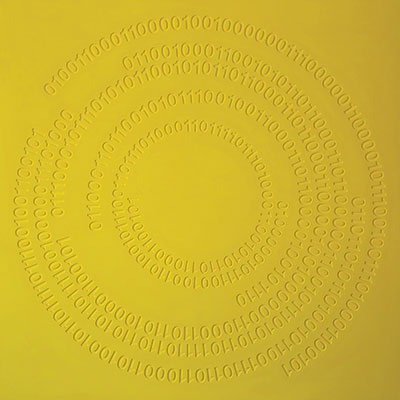
Superficie gialla, 2017 - Acrilico su tela, cm 100x100
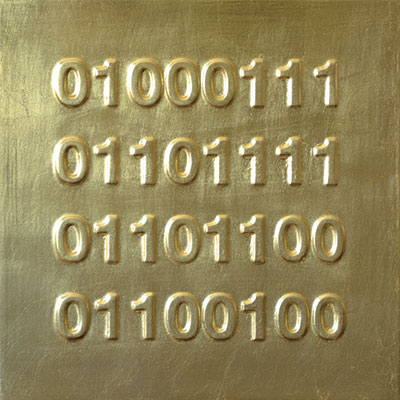
Superficie foglia oro, 2017 - Foglia oro su tela, cm 40x40
In approaching these works, one cannot also disregard the historical-artistic links that the conscious assumption of a mathematical code as an object of representation suggests. The research of the two authors is placed within a framework rich in aesthetic references, in which the relationship between mathematics and art is expressed in different directions: as a material representation of numerical signs within the work [...] or as an influence of mathematical language in the structural organization of the work [...].
The mathematical matrix of the work is translated into a rigorous and essential composition that though is seen to be pervaded by a widespread sense of mystery, by a semantic ambiguity in manifest contrast with the exactness of the represented code: the ineffable mystery of the real is hidden in the rigor of the form.
In the stratification of meanings that these works imply, a further possibility of reading opens up, which refers to their metalinguistic value. The organization of the sequences of 0 and 1 within the work is not, in fact, random but corresponds to a literal meaning that is hidden behind the numerical signs.



















